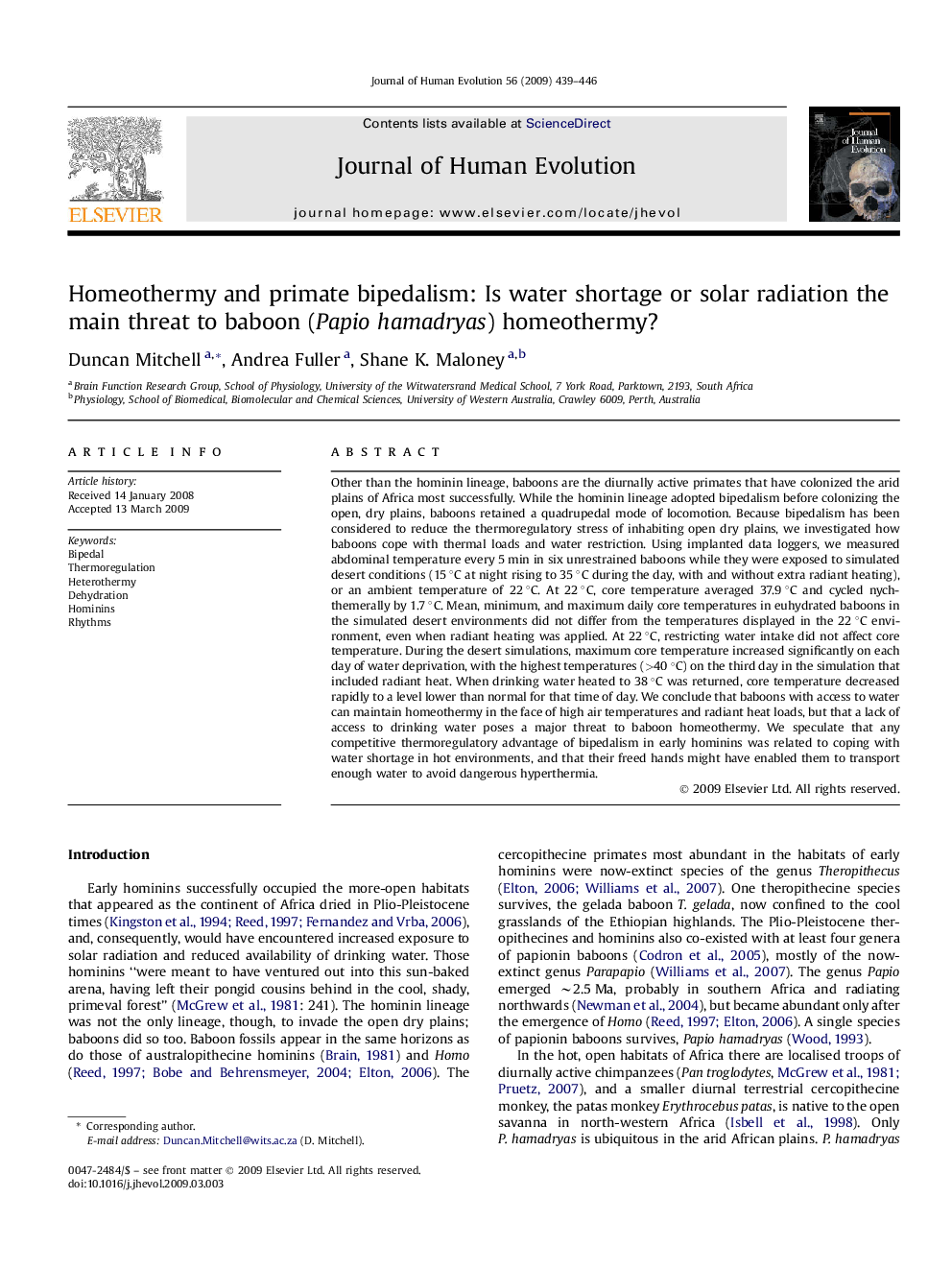| Article ID | Journal | Published Year | Pages | File Type |
|---|---|---|---|---|
| 4557000 | Journal of Human Evolution | 2009 | 8 Pages |
Other than the hominin lineage, baboons are the diurnally active primates that have colonized the arid plains of Africa most successfully. While the hominin lineage adopted bipedalism before colonizing the open, dry plains, baboons retained a quadrupedal mode of locomotion. Because bipedalism has been considered to reduce the thermoregulatory stress of inhabiting open dry plains, we investigated how baboons cope with thermal loads and water restriction. Using implanted data loggers, we measured abdominal temperature every 5 min in six unrestrained baboons while they were exposed to simulated desert conditions (15 °C at night rising to 35 °C during the day, with and without extra radiant heating), or an ambient temperature of 22 °C. At 22 °C, core temperature averaged 37.9 °C and cycled nychthemerally by 1.7 °C. Mean, minimum, and maximum daily core temperatures in euhydrated baboons in the simulated desert environments did not differ from the temperatures displayed in the 22 °C environment, even when radiant heating was applied. At 22 °C, restricting water intake did not affect core temperature. During the desert simulations, maximum core temperature increased significantly on each day of water deprivation, with the highest temperatures (>40 °C) on the third day in the simulation that included radiant heat. When drinking water heated to 38 °C was returned, core temperature decreased rapidly to a level lower than normal for that time of day. We conclude that baboons with access to water can maintain homeothermy in the face of high air temperatures and radiant heat loads, but that a lack of access to drinking water poses a major threat to baboon homeothermy. We speculate that any competitive thermoregulatory advantage of bipedalism in early hominins was related to coping with water shortage in hot environments, and that their freed hands might have enabled them to transport enough water to avoid dangerous hyperthermia.
